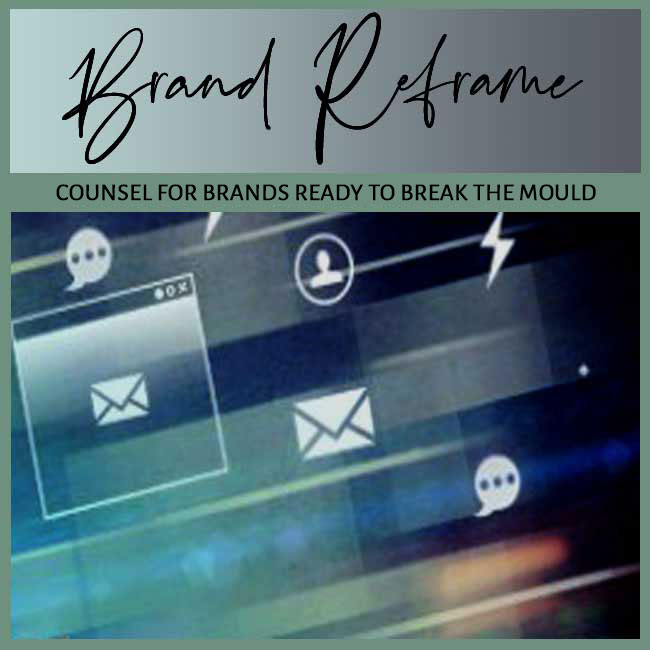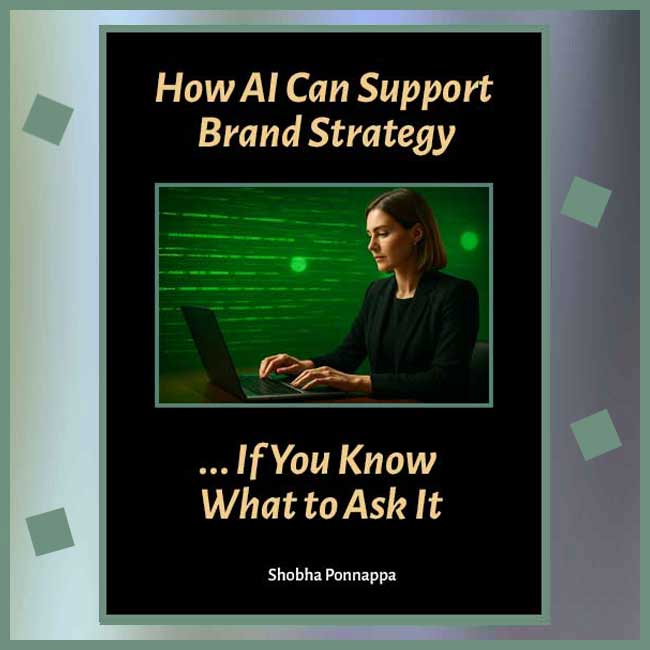
FOCUS: BRAND MESSAGING DISCONNECT | AUDIENCE: EXPERTS WITH IGNORED BRANDS
BY: SHOBHA PONNAPPA | BRAND BREAKTHROUGH STRATEGIST | 45 YEARS | 125+ CLIENTS
I helped a forensic linguist with vague “I help” statements turn his unique skill into a searchable narrative.
This expert had a fascinating and highly specialised field: forensic linguistics. His work involved analysing criminal texts, decoding patterns in written threats, profiling through speech and syntax, and even training legal professionals to detect deception in language. But when he attempted to translate his career into a personal brand, the results fell flat. Despite deep credibility and rare expertise, he remained invisible online.
His website and LinkedIn headline used generic phrasing like “I help legal teams understand the truth behind language patterns.” While technically true, it lacked the specificity needed to trigger recognition. Was he a copywriter? A communication coach? A therapist? No one could tell at first glance. His “I help” statements, while well-intentioned, had become vague containers that concealed more than they revealed.
When I reviewed his messaging, I discovered he had been editing himself into blandness. Afraid of confusing people with technical terms, he had stripped his copy of depth. The words “forensic linguistics” barely appeared. The cases he’d cracked were never mentioned. The language was clean, cautious, and professional … but utterly forgettable. He wasn’t lacking clarity. He was lacking confidence in his uniqueness.
I also noticed he had no category foothold. There was no mention of which clients he wanted to attract … investigators, lawyers, production houses, or educators. He had unintentionally positioned himself as a generalist when he was, in fact, a highly sought-after specialist. Without concrete use-cases or audience targeting, the brilliance of his expertise got buried under abstract language.
I encouraged him to stop hiding behind generalities and instead own the niche head-on. My breakthrough idea was simple: turn forensic linguistics from a technical discipline into a strategic service category. Instead of saying “I help legal teams,” he now led with: “Forensic linguistics for investigation, litigation, and media integrity.” It was bold, confident, and crystal-clear.
The key shift wasn’t about abandoning the “I help” structure … it was about making it do real work. Instead of vague outcomes, I refocused the message on clear problems solved and specific contexts served. I reframed his brand not as a helper, but as a decoder of critical truths … giving voice to texts that hide intent, motive, or manipulation.
I rebuilt his homepage to lead with the term he once buried: forensic linguistics. I followed it with three short, punchy sections: For Law, For Investigators, For Media. Each had a focused description, linked to case examples and a content asset. His messaging hierarchy was rebuilt to reflect category, use-case, and outcome … in that order.
His “About” section was also reworked … not to list credentials, but to tell the story of how words reveal things people try to hide. I restored the specialist tone without alienating a broader audience. Social bios were rewritten to show: “Helping legal teams and journalists decode deception through forensic linguistics.” The positioning was now clear, distinctive, and findable.
Here are 10 strategic ideas developed (and several executed) to support the new brand direction:
Blog Mini Case Series: Weekly posts walking through famous crime examples decoded through linguistic patterns.
YouTube Shorts on “Deception Markers”: Bite-sized videos explaining one giveaway phrase or structure used in misleading language.
Carousel Posts: “Real or Red Flag?” Swipe-through social posts showing ambiguous sentences and what they might conceal.
Landing Page for Legal Firms: A specific content-rich page outlining services for lawyers, with examples of court transcript analysis.
PDF Lead Magnet: “10 Linguistic Red Flags Every Investigator Should Know” … free in exchange for email opt-in.
Podcast Guest Appearances: Targeted pitch deck with three niche episode angles: Lies in Language, Criminal Cues, Trial Talk.
Blog Series: Word vs Intent: Exploring how surface language can mask psychological motive or criminal behaviour.
Interactive Email Sequences: A 4-part onboarding flow introducing new subscribers to forensic linguistics via real case snippets.
“Decode This” Monthly Newsletter: One paragraph of suspect text, with an expert analysis walkthrough … gamified and informative.
Bespoke Service Pages by Use-Case: Dedicated site pages for legal, media, academic, and policing sectors … each tailored in tone.
Inquiries from legal professionals increased by 4× after homepage restructure.
Podcast appearance requests doubled after niche repositioning and bio changes.
Lead magnet had a 37% conversion rate on a focused landing page.
Blog engagement rose by 280% with content that demonstrated real expertise.
CONFIDENTIALITY CAVEAT: This case study represents a confidential engagement. For privacy, specific brand identifiers, campaign names, and project phases have been withheld. It has been shared with permission while preserving client discretion.
If you’re brand owner or manager seeking stronger brand performance, here’s a case study that could interest you: “How a Germ-Fighting Antiseptic Soap Killed Its Own Engagement.“
If you’re an investor seeking momentum for your portfolio brands, this case study I worked on may resonate: “How a Health Snack Brand Got Chewed Up by Scaling Confusion.“

"One BIG IDEA can turn brand stagnation into unstoppable movement. Spots are limited each week ... book your breakthrough session now."
Shobha Ponnappa
More Breakthrough Ideas … Case Studies & FAQs … from the Brand Messaging Disconnect Category
Case Studies
FAQ Insights
Smart insights, real-world frameworks, and idea-driven clarity – designed to help brands move.
Get my fortnightly Brand Reframe newsletter. Smart insights, distilled thinking, and focused momentum to help your brand lead.

Get my free AI strategy guide. Smart prompts, sharper briefs, and practical ways to make AI support your brand momentum.

Just fill in the form to join. Get my newsletter and the guide shown alongside, all with several game-changing tips.